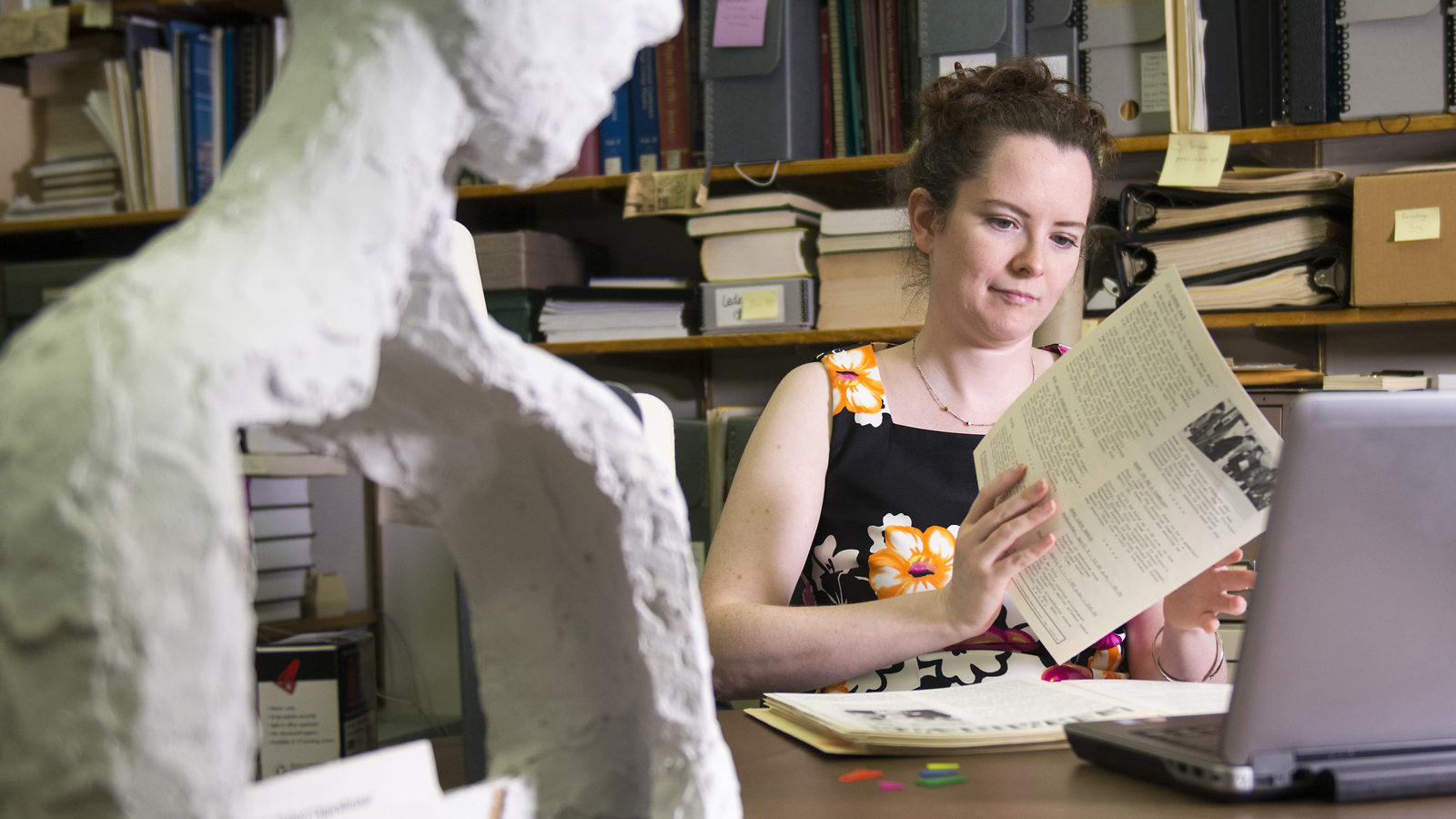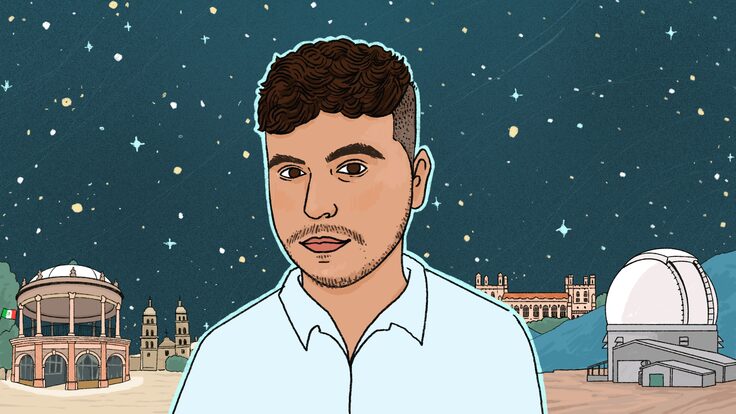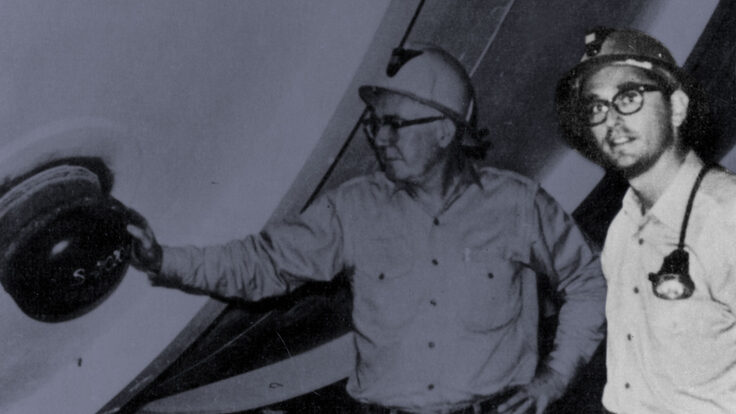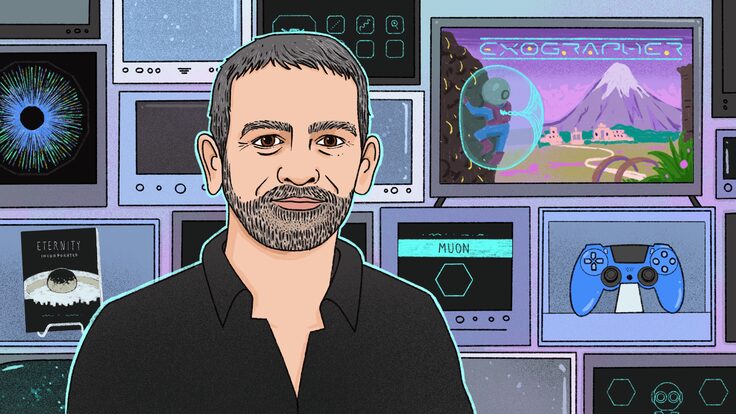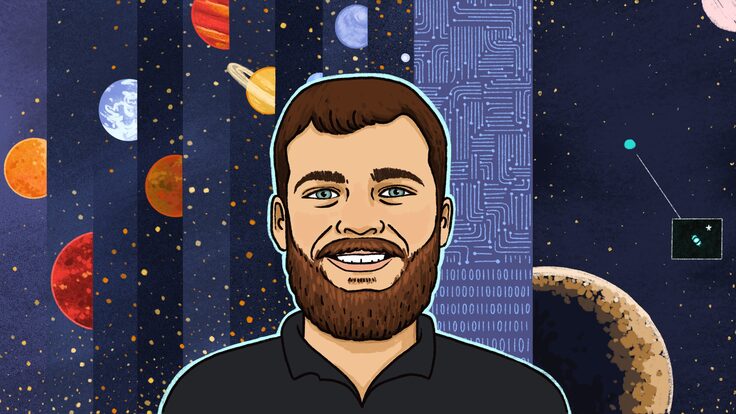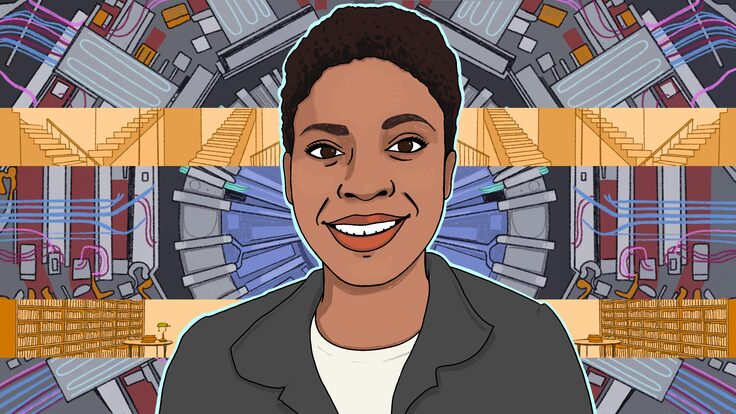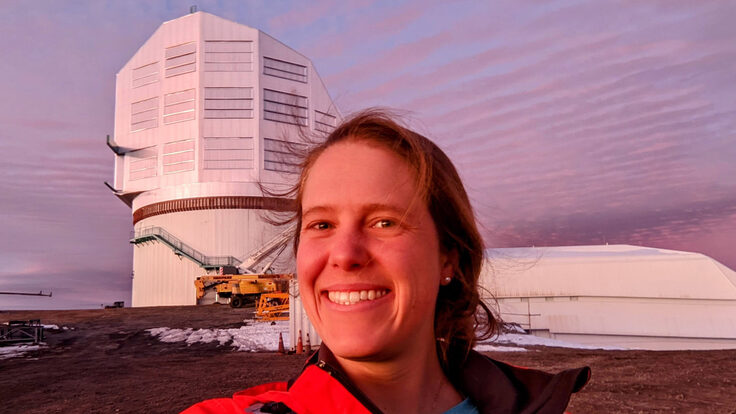On the third floor of the central high-rise building at Fermi National Accelerator Laboratory, archivist Valerie Higgins’ office is full of odd treasures. There’s a wizard hat once worn by Nobel laureate and former lab director Leon Lederman, and a plaster bust of Manhattan Project physicist Robert Oppenheimer made by Fermilab’s founding director, Robert Wilson. There’s a trophy-shaped samovar of unknown origin—possibly a gift from tea-drinking Russian scientists.
Stacked along one wall of shelves are around 30 humble green or brown boxes, each containing about 30 cassette tapes: oral histories that date back to the founding of the archives 40 years ago.
The tapes contain interviews with people that have been instrumental in building the lab and the experiments that run there. Most of the interviews are with physicists. But some venture outside the detector halls to speak with the technical and support staff that make sure the physicists’ research takes place. Higgins, who has conducted around 50 oral history interviews herself, has been consciously adding to this category in her six years as Fermilab archivist.
Higgins has authored a paper available in the online physics repository, arXiv, and earlier this month published an op-ed for Physics World on the importance of capturing perspectives from all parts of the laboratory. She sat down with Symmetry writer Lauren Biron to discuss her thoughts.
What kinds of perspectives do you look to capture in your work?
Since scientific research often involves such large numbers of people, and the experiments or projects can become like institutions unto themselves, you have to approach documenting things with an eye towards the entire project.
You need to document the contributions not just of the scientists who were working on the experiment, accelerator or project you are interested in, but also other technical staff who may not be physicists—people like computer scientists, engineers and technicians—and then also people who might be considered non-technical, such as administrative assistants.
I don’t think I fully understood or appreciated how many people are involved in making modern scientific research happen until I started my position here. In the paper, I listed some of the positions from Fermilab’s directory in 1969, and they include things like a nurse and an artist and a director of public information—positions someone unfamiliar with the lab might not expect to find here. We have accountants, the roads and grounds crew, the security staff. There are all sorts of different positions it takes to make the lab run. The site is 6800 acres and there are thousands of employees and scientists from collaborating institutions, so of course there are these sorts of positions. But until you stop to think about what it takes to run the lab, that might not occur to you.
I try to get as broad a slice as I can. For instance, when I started, we hadn’t documented as much of the computing as we would have liked to, but former lab archivist Adrienne Kolb and I worked together to start to remedy that. We have interviews with people from the education office, human resources, directors, assistant directors, high level administrators, administrative assistants, technicians. I would like to get more technicians and engineers.
What are the benefits of capturing information from non-scientific staff in oral histories, particularly compared to more traditional records?
You don’t want to think of oral histories as a replacement for other records. They definitely have their limitations. There’s the fallibility of human memory. Sometimes people will just be flat out inaccurate, like on dates. Some things are more subjective and people will remember them different ways.
What makes oral histories valuable is actually that subjectivity. There are things you can capture in an oral history interview that you just don’t get from the records, or that never made it into the records. There are the reasons decisions were made or ways in which things were done. It’s the day-to-day stuff that isn’t written down anywhere or formalized in such a way that won’t make it into the records.
Sometimes everyone just knows that stuff, so it’s not written down, but then 20 or 30 years later, not everyone knows that assumed knowledge.
Fermilab has a very strong oral history program in the archives that dates back to the beginning of the archives in 1978. Right off the bat they were doing oral history interviews with people. We have over 1000 tapes of interviews, and now we have digital files of more recent interviews.
While we’ve focused on interviewing non-scientific people more recently, they did some of that even in the early days. I’ve found those interviews to have very interesting content and to be unique perspectives on the early history of the lab.
One of the things that can be valuable, particularly with people such as administrative assistants, is they can provide more of an outside view on what’s happening in the experiment or project. They often are not involved in a highly specialized area—they often have more general knowledge and know more about how the different areas interact.
One thing I found with the oral history interviews was that a lot of people I interviewed who were non-technical have really appreciated that I wanted to interview them and saw their contributions to the lab as valuable. I’ve encountered some staff who are baffled and say, “Why do you want to talk to me, I haven’t done anything that important.” But then when I interview them, it always turns out that they did important things that were key to the success of the lab.
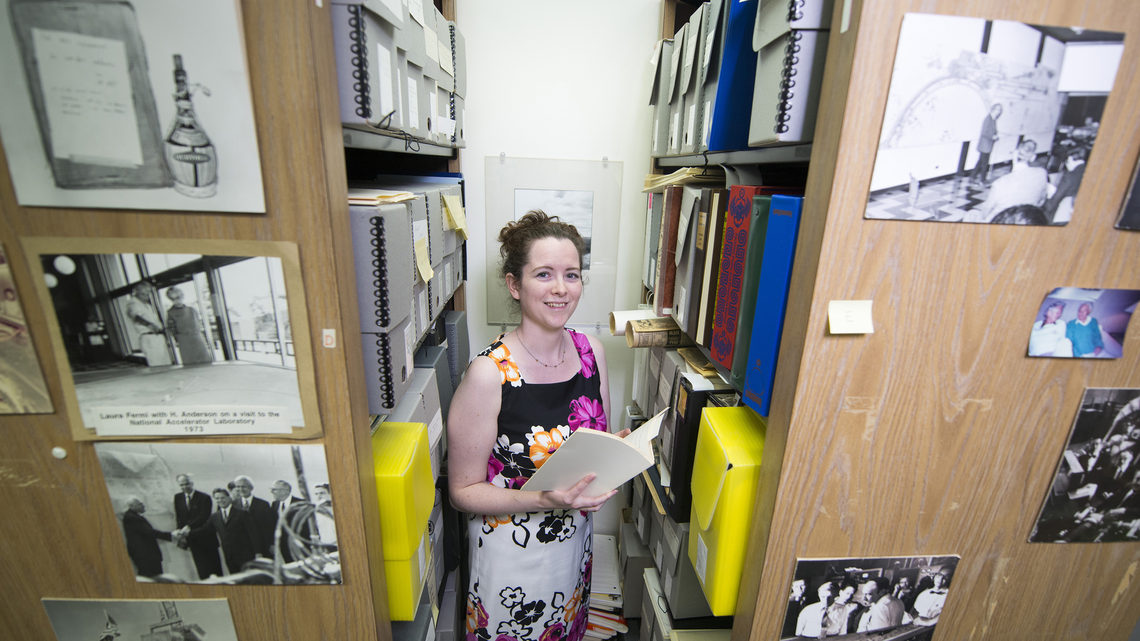
What kinds of things are you missing from the early days of the lab?
One example is the bubble chamber film scanners, the teams of mostly women who looked through images for potentially interesting particle events from a detector. So far, I have not found any interviews with the bubble chamber film scanners. I haven’t found anything other than the articles written about them.
That would be interesting if we had it—an interview with someone explaining what their day to day work was like, and what they did, and how they interacted with physicists. As far as I can tell, that doesn’t seem to exist. There wouldn’t have been any other records that documented something like that. That’s the sort of thing you’re only going to get from an oral history interview.
Have you found things that surprised you?
I’ve found very interesting things, like the interview with Robert Wilson’s first primary administrative assistant, Priscilla Duffield, who had also been assistant to Ernest Lawrence [who won the Nobel Prize for inventing the cyclotron particle accelerator] and Robert Oppenheimer [who led Los Alamos National Laboratory during the Manhattan Project and later advocated against nuclear proliferation].
One of the frustrations with oral histories is you sometimes hear something really interesting and wish you could ask for more detail. She only gives a few sentences about it, but Duffield briefly talks about the different leadership and decision-making styles that she saw in Wilson versus Oppenheimer versus Lawrence, and I thought that was a really cool thing to find.
I don’t know if this is surprising, but it’s fun to hear about some of the cultural events that went on at the lab. You might have some photos from an event, but you don’t usually have many records that tell you about the games or food or funny things that people did or said. I suppose it might sound frivolous, but some of those things give you insight into what the life at the lab was like at that time.
What do you hope people will learn from your recent work?
I think the most relevant thing for anyone to be aware of is the importance of people who are in the support roles. Be aware of their importance if you’re an archivist trying to document modern scientific research, if you’re a historian writing about this work, if you’re a scientist involved in the work. Remember that these people are also making that research happen.
And if you are a support person, be aware that your work is important and valuable. It’s not just scientists who make these experiments happen and who make this lab run—it also takes people with other interests and talents that align.



